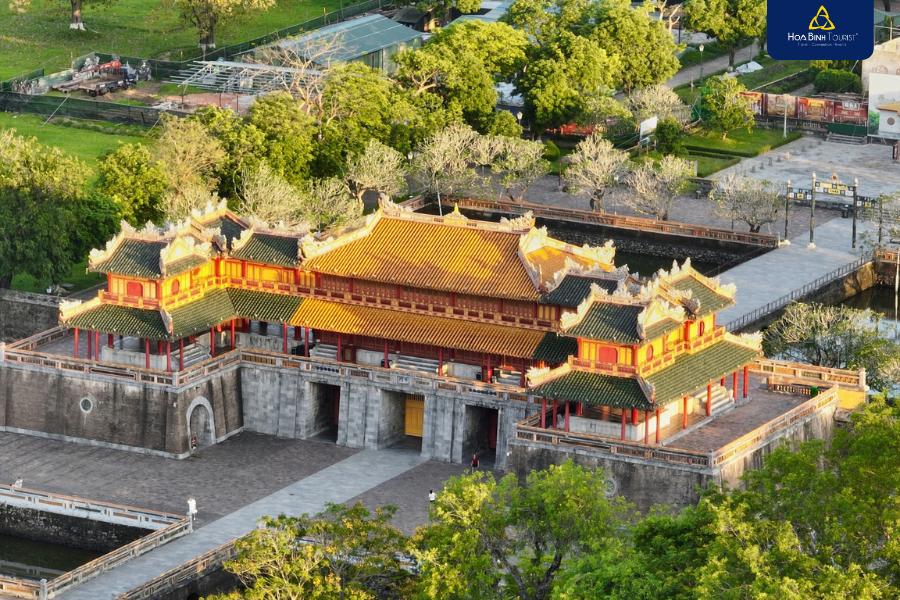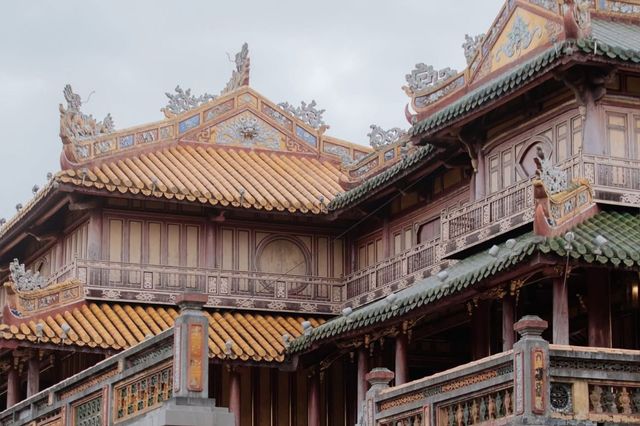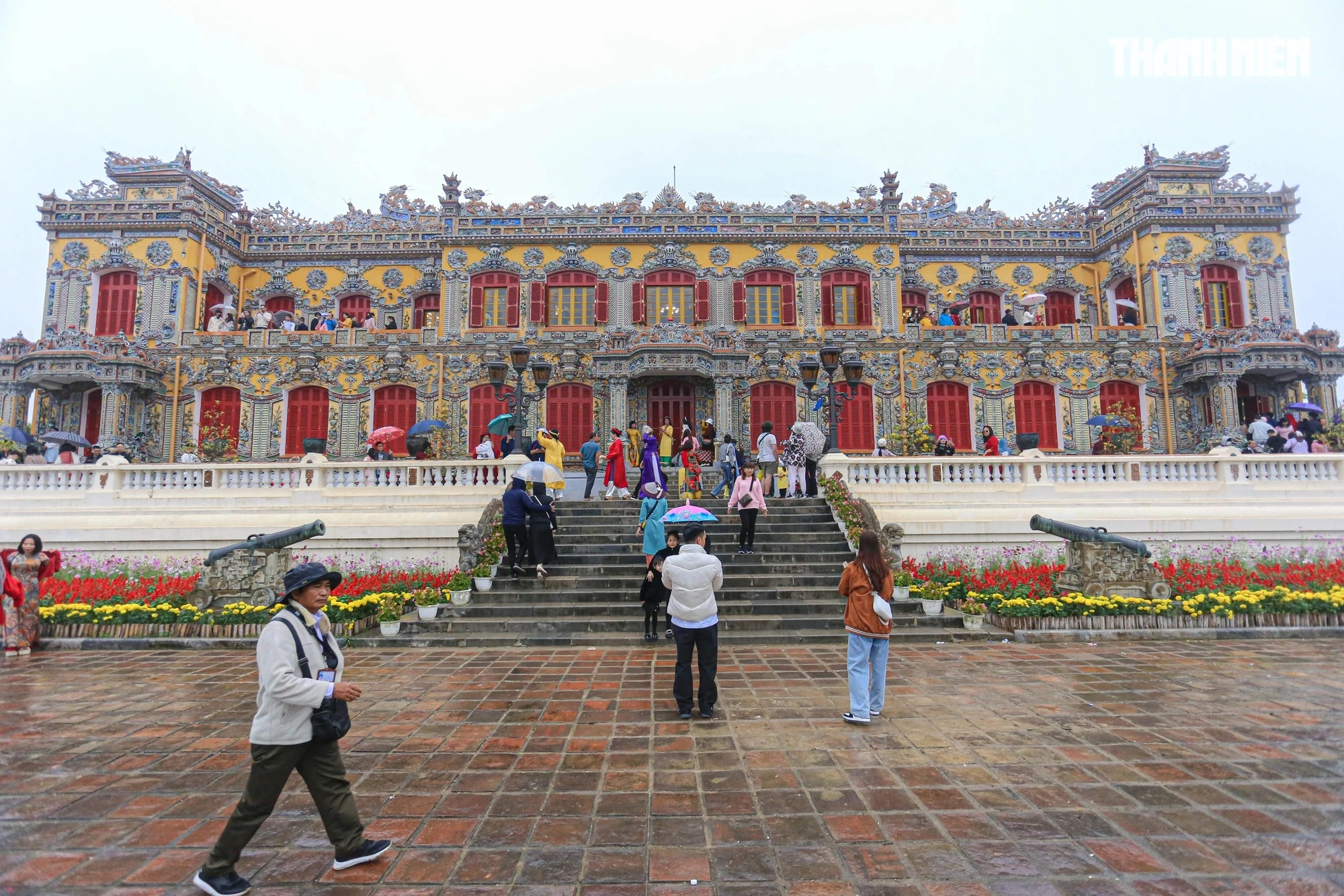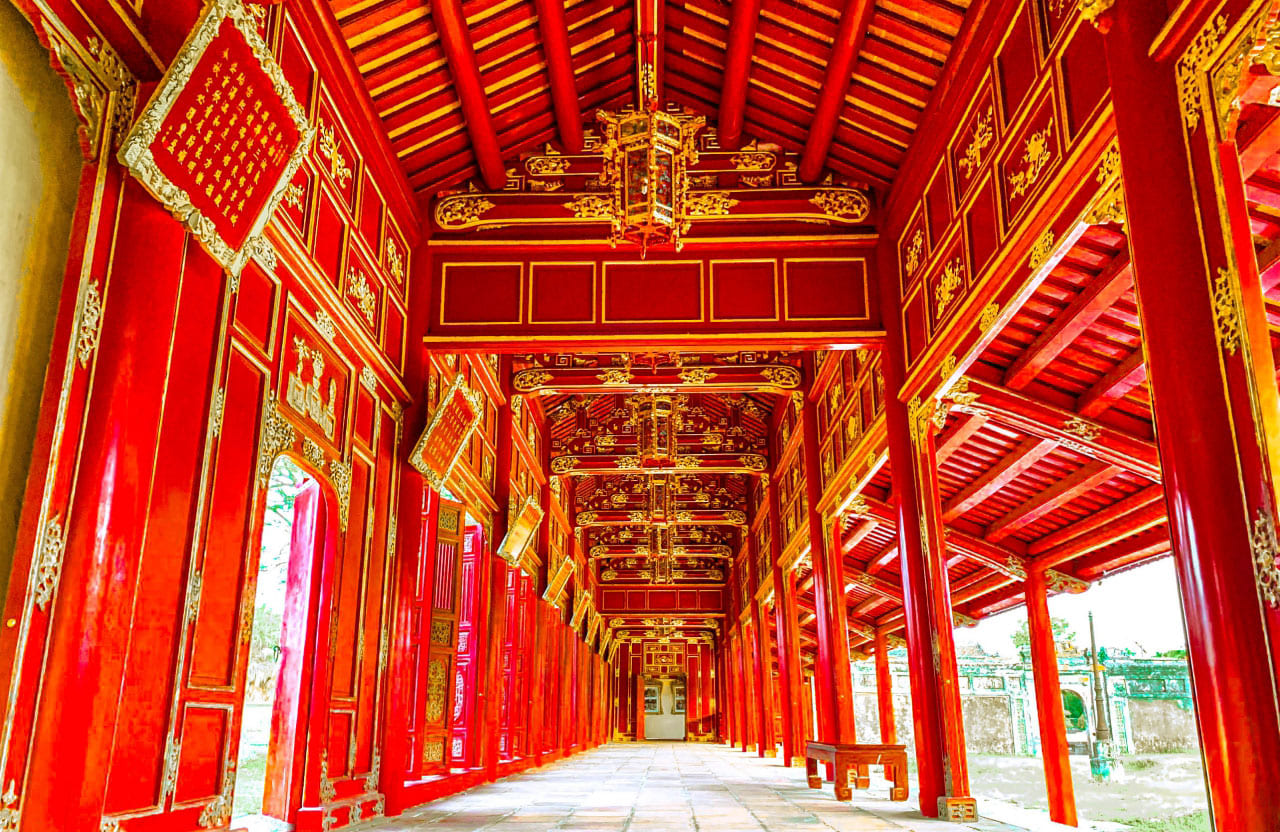Hue Imperial Citadel: Exploring the Architecture of the Capital of 13 Nguyễn Dynasty Emperors
Discover the Hue Imperial Citadel, a magnificent complex of Royal architecture where 13 Nguyễn Dynasty Emperors ruled. This detailed article covers the history, Feng Shui significance, and unique architecture of the Imperial City and Forbidden Purple City, along with practical visiting tips, ticket prices, and the most impressive photo spots at this UNESCO World Heritage Site.
Hue Imperial Citadel: Exploring the Architecture of the Capital of 13 Nguyễn Dynasty Emperors
In the historical currents of Vietnam, no relic preserves the essence and majesty of the last feudal dynasty as clearly as the Hue Imperial Citadel (Đại Nội Huế). This is not only a magnificent architectural complex but also a powerful testament to the center of power, culture, and art under the Nguyễn Dynasty. To explore the Hue Imperial Citadel is to embark on a journey back in time, admiring the structures recognized by UNESCO as a World Cultural Heritage Site.
This article serves as a comprehensive and detailed guide, helping you understand the history, architectural significance of the Imperial City (Hoàng thành) and the Forbidden City (Tử Cấm Thành), along with practical tips on ticket prices, detailed itineraries, and the most impressive photo spots.
I. Overview of the Hue Imperial Citadel World Cultural Heritage Site
Many tourists generally refer to the entire complex as the Hue Imperial Citadel (Đại Nội Huế), but in reality, this term specifically refers to the areas of the Imperial City (Hoàng thành) and the Forbidden Purple City (Tử Cấm Thành). The entire system was built within the second layer of the Hue Citadel (Kinh thành) under Emperor Gia Long (1805) and completed under Emperor Minh Mạng. This complex symbolizes authority and served as the residence, workplace, and living area for 13 Nguyễn Dynasty emperors.
The structure of the Hue Citadel is divided into three nested fortresses, strictly adhering to the principles of Feng Shui (geomancy):
Kinh Thành (Capital Citadel): The outermost ring, encompassing the entire old city area, including residential areas and administrative offices of the time.
Hoàng Thành (Imperial City, or Đại Nội): The middle ring, the administrative and political center of the court, featuring prominent structures such as Ngo Mon Gate, Thai Hoa Palace, Ta Vu, and Huu Vu.
Tử Cấm Thành (Forbidden Purple City): The innermost ring, deeply situated within the Imperial City, served as the private living quarters for the Emperor and the royal family.
II. Detailed Tips for Visiting the Hue Imperial Citadel
To have a complete visit to the Hue Imperial Citadel, grasping information on ticket prices, hours, and the best timing is crucial:
1. Updated Ticket Prices and Opening Hours
Ticket prices for the Imperial Citadel are typically differentiated for domestic and international visitors. You should check the official information from the Hue Monuments Conservation Center for the most accurate pricing.
Opening hours usually extend from early morning to late afternoon, and there are often performances or night tours in the evening.
You can purchase tickets directly at the counter or buy e-tickets to save time.
2. Ideal Time to Visit
The best time to visit the Hue Imperial Citadel is during the dry season (from March to August), especially in the early morning or late afternoon. Early mornings are cooler with fewer tourists, making it ideal for photography and a more leisurely visit.
3. Guidance on Transportation and Parking
The Imperial Citadel is located right in the center of Hue city. You can easily travel by taxi, cyclo, or rented motorbike. There is a designated parking area for visitors near the Ngo Mon Gate.
III. Deciphering the Unique Architecture and Feng Shui
The architecture of the Hue Imperial Citadel is a perfect blend of traditional Vietnamese court architecture and the influence of East Asian Feng Shui, reflected in the system of symmetry, colors, and materials used.
Ngo Mon Gate (Meridian Gate): This is the main southern entrance to the Imperial City, featuring a five-door structure that symbolizes imperial authority. The central door (Ngo Mon) was exclusively for the Emperor, the two side doors (Ta Giap Mon and Huu Giap Mon) for mandarins, and the two outermost subsidiary doors for soldiers and war elephants.
Thai Hoa Palace (Supreme Harmony Palace): The venue for crucial Grand Court Ceremonies of the court. Its trùng thiềm điệp ốc (tiered roof structure) architecture with two soaring roof levels expresses solemnity and majesty. The name "Thai Hoa" signifies harmony and balance.
Tử Cấm Thành (Forbidden Purple City): Although much was destroyed by war, the remaining vestiges still show that this was a private, restricted area, including palaces like Can Thanh Palace (the Emperor's sleeping quarters) and Can Chanh Palace (the Emperor's workplace).
IV. Itinerary and Route Suggestions for Exploration (3 hours)
To avoid getting lost and missing important spots, you should follow this suggested route:
Step 1: Enter through Ngo Mon Gate, admire the gate's architecture and the panoramic view of the Grand Courtyard.
Step 2: Move into Thai Hoa Palace, taking time to appreciate the interior and roof architecture.
Step 3: Explore the remaining structures of the Forbidden Purple City and the symmetrical areas like Ta Vu/Huu Vu.
Step 4: Visit Dien Tho Palace and Truong Sanh Palace (residences of the Queen Mother and Dowager Empresses).
Step 5: Conclude your visit, don't forget to stay and watch the Court Music performance or seek out the moss-covered wall corners for photos.
V. TOP 5 Best Photo Spots/Check-in Locations
The Hue Imperial Citadel is an endless source of inspiration for photography enthusiasts. Here are the "must-visit" photo spots:
Ngo Mon Gate: Shot from the Grand Courtyard, capturing the entire five doors and the flag tower.
Hien Nhon Gate: An ancient, moss-covered look with yellow walls.
Grand Court Yard (Sân Đại Triều Nghi): The vast, imposing space in front of Thai Hoa Palace.
Ta Vu/Huu Vu: Symmetrical architecture, ideal for photos with an ancient or nostalgic style.
Back Garden Area: Utilize natural light and quiet garden corners.
VI. Discovering Combined Tours (Promotional Service)
To save time and gain a deeper understanding of history through the guidance of a professional tour guide, many visitors opt for all-inclusive Hue tour packages. These tours often combine a visit to the Imperial Citadel with famous tombs like the Tomb of Khai Dinh and the Tomb of Minh Mang, creating a seamless historical exploration journey.
You won't have to worry about transportation, admission fees, or historical knowledge, making the trip easier and more meaningful.
Conclusion
The Hue Imperial Citadel is not just a tourist destination but a profound historical and cultural experience, helping us understand the last feudal dynasty of Vietnam. With these detailed Hue Imperial Citadel travel tips, we hope you are ready for your journey to explore this dreamy ancient capital.
If you are looking for a complete and convenient experience, don't hesitate to contact us now to receive consultation and book the best Hue Tour package!
Please call: (+84) 989661264 - (+84) 937809095
(Mr Truong John)
To get Bus Ticket With high Quanlity & Cheapest Price
Add: 40 Bat Dan Str, Hoan Kiem Ward, Ha noi, Viet Nam
Tel/Zalo/WhatApp: (+84) 989661264 - (+84) 937809095
E - mail: xedihue@gmail.com
Website: xedihue.com






main.comment_read_more